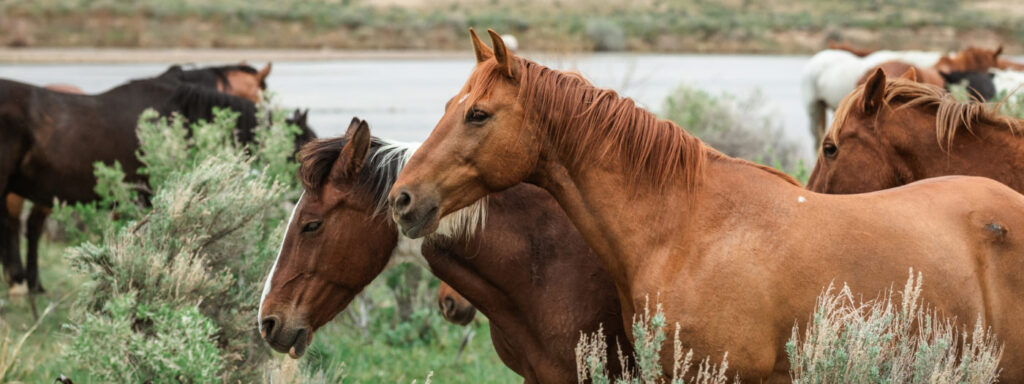
The term “alpha mare” often gets tossed around to describe a dominant, bossy, or “mareish” horse who seems to be in charge. While it’s a catchy phrase, it’s based more on human misunderstanding than actual equine science.
Let’s explore why the “alpha” idea doesn’t hold up – and what’s really going on in the herd.
Where the “Alpha” Idea Came From
The concept of an “alpha” leader originally came from early wolf studies in captivity during the mid-20th century. Researchers noticed a hierarchy and assumed it was based on physical dominance and aggression.
Later, more accurate field research (Mech, 1999) revealed that wild wolves operate as family units, with cooperative leadership rather than constant dominance battles. Unfortunately, the outdated “alpha” term stuck – and it spilled over into horse training.
How Horses Actually Organise Themselves
Horses are social grazers, living in loosely structured herds. Research on feral horses shows that leadership is often shared and context-dependent.
Older, experienced mares often lead movement to food and water.
Stallions may protect the herd but don’t control every decision.
Decisions are often made by subtle cues and mutual following, not by one horse “bossing” the others around.
Instead of a strict pecking order with an all-powerful “alpha,” horses operate in fluid social networks where relationships matter more than dominance.
Why the “Alpha Mare” Label Can Be Harmful
Calling a horse an “alpha” can lead to training methods based on confrontation and forced submission (dominance methodology).
This can:
Break the trust between horse and handler.
Create fear-based responses rather than true cooperation.
Overlook the underlying cause of a horse’s behaviour (pain, stress, lack of clarity).
I’ve seen many so-called “alpha mares” transform into calm, willing partners when their needs are met, their communication is understood, and they’re given choice in their interactions.
What’s Really Behind “Alpha” Behaviour
When a mare pins her ears, moves another horse away from hay, or challenges a handler, it’s not about trying to take over the “herd ” – or you! – it’s about resources, comfort, or safety.
Common drivers of these behaviours include:
Pain or discomfort (such as saddle fit or ulcers).
Previous harsh handling.
Confusion about what’s being asked.
Defending space when feeling crowded.
When we reframe these behaviours as communication rather than power struggles, our training can become far more effective and compassionate.
How to Work With a “Confident” or “Assertive” Mare
-
Respect her space and ask for the same in return.
-
Reward calm, cooperative behaviour instead of punishing defensive reactions.
-
Be consistent with cues so she knows what’s expected.
-
Check for discomfort before labelling behaviour as “attitude.”
The “alpha mare” is a myth. Your horse isn’t trying to dominate you; she’s responding to her environment, her past experiences, and her needs in the moment.
When we move away from dominance-based thinking and toward understanding and communication, we create a partnership built on trust, not fear.
Want to understand your horse’s behaviour on a deeper level?
Book a behaviour consult with Gentled Animals and discover kind, science-backed training that builds trust and clarity.